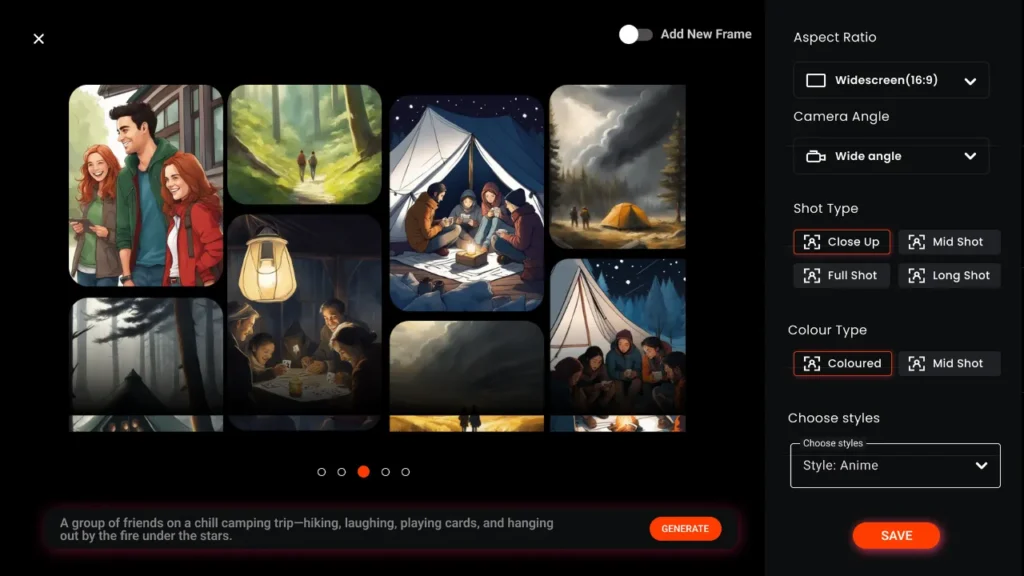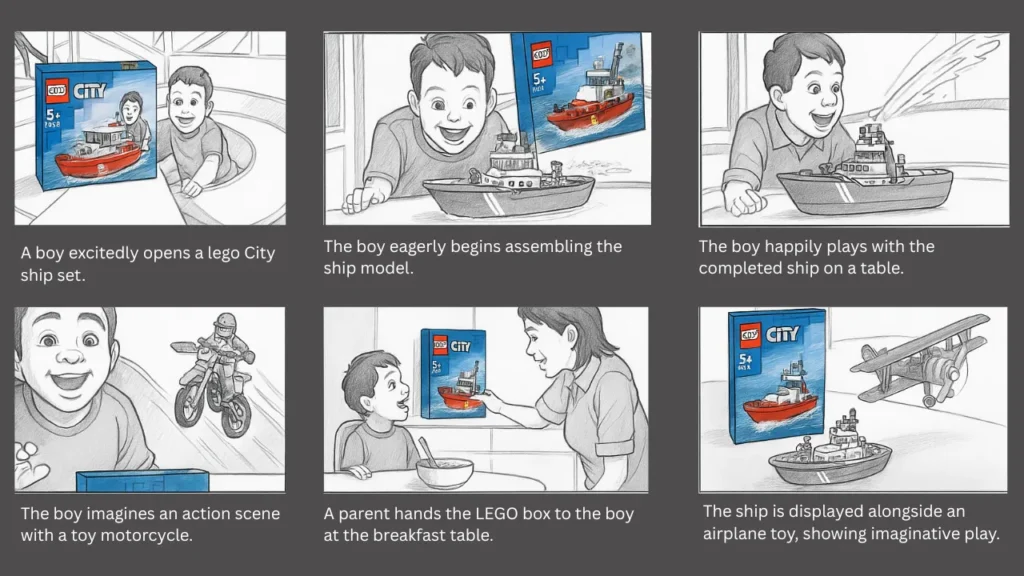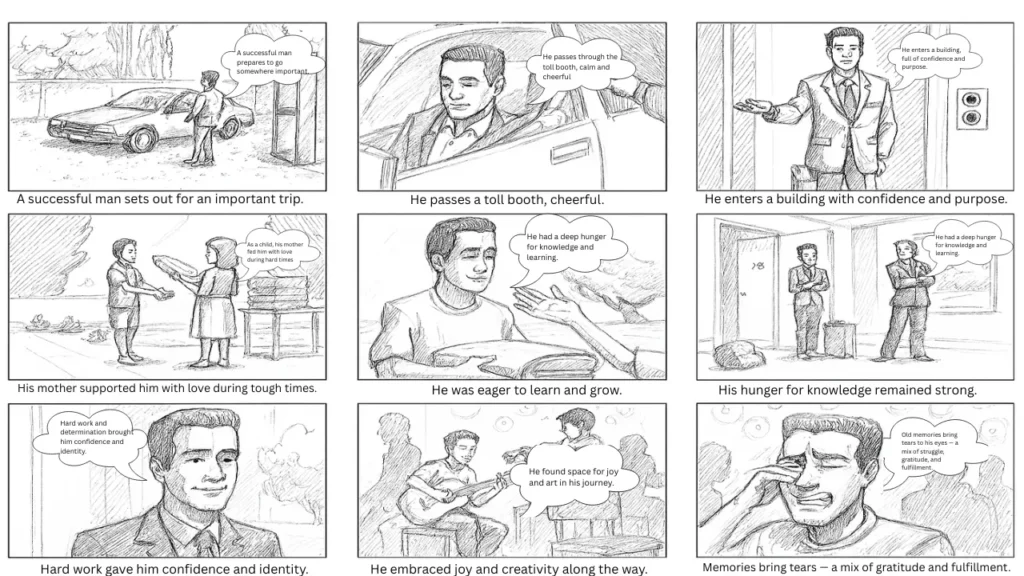How to Create a Storyboard for a Short Film

When I first heard about storyboarding a short film, it felt overwhelming. I don’t come from a sketching or design background, so questions flooded my mind—how to create a storyboard for a short film, is it even necessary, what tools do I need, and how long does it take? It all seemed too technical.
But here’s the truth: it’s much simpler than it looks.
Once I discovered tools like AI storyboard generators and online storyboard templates, I realized I didn’t need to be an artist or spend weeks sketching every detail. I managed to create a complete storyboard in just a few hours—not days or months.
In this guide, I’ll walk you through exactly how I did it, step-by-step. From basic pre-planning to drawing frames, using a story boarding tool, and even understanding why adding text is crucial—this is everything I wish I had when I started.
So if you’re feeling stuck or unsure about how to storyboard a short film, keep reading. You’ll be surprised how easy it is.
Pre-Planning a Short Film Storyboard
Let’s start creating the short film storyboard. Before jumping into sketches or digital panels, the first step is pre-planning—and trust me, this part makes the rest so much easier. Think of it like laying the foundation before building a house.
Analyze the Script Carefully
Go through the script scene by scene. Highlight emotional moments, key dialogues, transitions, and actions. This helps identify what needs to be visualized.
Break the Story into Scenes
Divide the entire script into short, manageable sections or sequences. This keeps the storyboard organized and easier to handle, especially for short films.
List the Essential Shots
Decide which shots are absolutely necessary to tell the story—like close-ups for emotion, wide shots for setting, or over-the-shoulder views for conversations. This becomes storyboard’s basic shot list.
Choose the Storyboard Style
Decide how you want to create a storyboard. Hand-drawn sketches? A digital storyboard creator? Or maybe an AI storyboard tool that speeds up the process? Pick what suits your comfort level and timeline.
Collect Visual Reference
Look for mood boards, movie stills, or photos that match short film’s vibe. These will guide your composition, tone, and style when you begin drawing.
Once this pre-planning is done, you’re ready to bring the story to life visually—confidently and quickly

How to Draw a Storyboard for a Short Film
Understanding how to draw a storyboard for a short film is less about art skill and more about clarity. Follow these key practices:
- Use simple sketches
Stick figures or basic shapes are enough to convey movement.
- Include framing and perspective
Represent depth, character position, and scene composition.
- Mark character movement and camera motion
Use arrows and notations for pans, tilts, or dolly shots.
- Apply basic lighting cues
Add contrast, shadows, or light direction for mood setup.
- Frame each scene in sequence
Ensure smooth flow from panel to panel.
An online storyboard maker can speed up this process, especially for fast-paced productions.
How to storyboard a short film in 7 Steps
Thinking about how to create a storyboard for a short film? Don’t panic—storyboarding a short film isn’t as complicated as it seems. You can create it with ease using our AI storyboard generator. Just follow these structured steps, and you’ll have a clear, professional storyboard that guides the entire short film production. Let’s break it down:
Break Down the Script
Start by analyzing the entire script. Highlight the action lines, dialogues, scene transitions, and key emotional moments. Identify the visual storytelling beats—these will form the foundation of the storyboard film. Note where each scene begins and ends.
Create a Shot List
List out the types of shots you want to include for each scene—close-ups, wide shots, over-the-shoulder, etc. This will help you plan the visual dynamics of the short film. A structured shot list ensures the capture of every necessary angle during production.
Sketch Thumbnails for Each Scene
Begin with thumbnail sketches—these are rough visual frames to represent each key moment. Don’t worry about detailed drawings. Stick figures, basic shapes, and directional arrows are enough. Focus on framing, camera position, and subject movement.
Add Camera Angles and Movements
Mark important camera movements such as pan, tilt, zoom, or tracking shots. Use arrows and labels to show direction. This step helps the cinematographer understand how each shot should be filmed, adding depth and style to the visual narrative.
Insert Text Notes and Dialogues
Below each sketch or frame, add brief text:
- Scene number and title
- Character names and expressions
- Key dialogue lines
- Technical notes (lighting, sound, special effects)
This makes communication between departments smooth and aligned.
Organize Using a Storyboarding Tool
Use a storyboarding tool or our AI storyboard generator to arrange panels in a clean, professional format. You can drag and drop, edit, and refine frames easily in digital form, saving both time and effort.
Review and Finalize the Storyboard
Go through the entire storyboard panel by panel. Check for continuity, clarity, and flow. Share it with the team—director, cinematographer, and editor—for feedback. Once finalized, this document becomes the go-to reference during the shoot.

Tips to Improve a Short Film Storyboard
I completed my short film storyboard in just a few hours, not weeks—and honestly, that only happened because I followed a clear process and kept a few important things in mind. If you’re planning a storyboard, here are the tips that helped me stay focused and finish faster without compromising quality:
Keep characters and backgrounds visually consistent
This makes it easier for the team to understand scene flow and who’s doing what in each frame.
Focus on composition, not detailed art
Even simple sketches can tell powerful visual stories if the framing and camera angles are clear.
Use text only where it adds clarity
A short note on movement, emotion, or dialogue can make a big difference—but don’t overload every panel.
Make shot transitions easy to follow
Think about how one scene leads to the next. Smooth transitions keep the pacing tight and logical.
Label every panel and scene properly
This helped me avoid confusion during editing and review. Numbering makes it easier to track progress and rearrange shots if needed.
Following these made the storyboarding process smoother and helped turn my short film idea into a production-ready visual guide—quickly and confidently.
Is AI Truly Making Short Film Storyboarding Easier?
The rise of tools like an AI storyboard generator has transformed how creatives approach storyboarding. These platforms can convert scripts into scene panels in minutes—saving hours of manual work. For creators without a design background, AI assistance enables quick visualization, layout arrangement, and even shot suggestions. While traditional methods still hold value for artistic control, AI-driven systems allow for faster prototyping and smoother collaboration.
For independent filmmakers or tight-schedule teams, AI storyboarding tools simplify storyboarding without compromising clarity.

Why Adding Text Enhances a Storyboard
Knowing how to create a storyboard for a short film goes beyond visuals. When I started storyboarding my short film, I quickly realized that adding text under each frame made everything clearer. Even simple notes helped me explain the mood, camera movement, or key dialogue—something sketches alone couldn’t do.
- Dialogue lines clarify tone and pacing.
- Camera directions guide cinematography teams effectively.
- Scene notes provide context for mood, lighting, or transitions.
- Sound or action cues ensure timing aligns during editing.
Text acts as the bridge between imagination and execution—vital in transforming a storyboard into a complete short film.
FAQs
Can I make changes to my storyboard later?
Absolutely. A storyboard is a flexible planning tool. You can revise it anytime during pre-production to reflect script updates, new ideas, or budget constraints.
Who uses the storyboard during production?
The director, cinematographer, editor, and even the sound and lighting teams use it to understand how each scene should look, feel, and flow during filming.
Do I need to storyboard every single shot in my short film?
Not necessarily. Focus on key scenes that drive the story—like the opening, emotional moments, and transitions. You can leave out repetitive or filler shots to save time.
How to draw a storyboard for a short film step-by-step?
Start by sketching boxes (frames) on paper or in software. In each box, draw a scene with basic shapes and stick figures. Use arrows to show movement and add captions for direction or dialogue. Repeat this for every key shot in your short film.
How to do a storyboard for a short film quickly?
To do a storyboard quickly, focus on the most important shots—like opening, turning points, and climax. Use a storyboard template or an online storyboarding tool. Adding short text notes for each frame can help clarify camera movements, actions, and dialogue.
How to storyboard a short film without drawing skills?
You can storyboard a short film using simple stick figures or by using a digital storyboard generator. These tools allow you to drag and drop characters, props, and backgrounds, making it easy even for non-artists to visualize scenes.
How to create a storyboard for a short film?
To create a storyboard for a short film, start by breaking your script into scenes. Then sketch key frames for each scene, showing character positions, camera angles, and movement. Use tools like digital templates or an AI storyboard generator to speed up the process.
